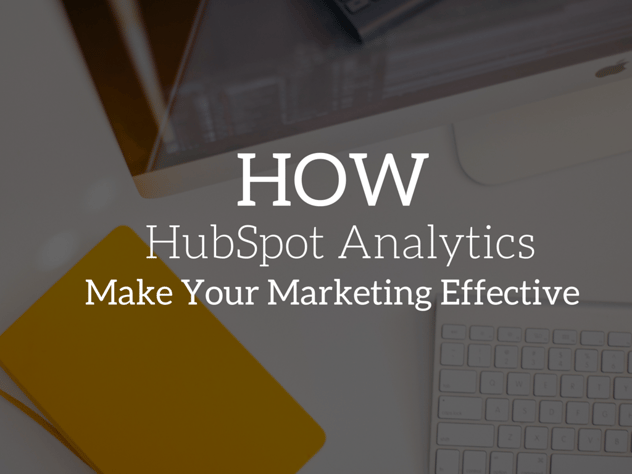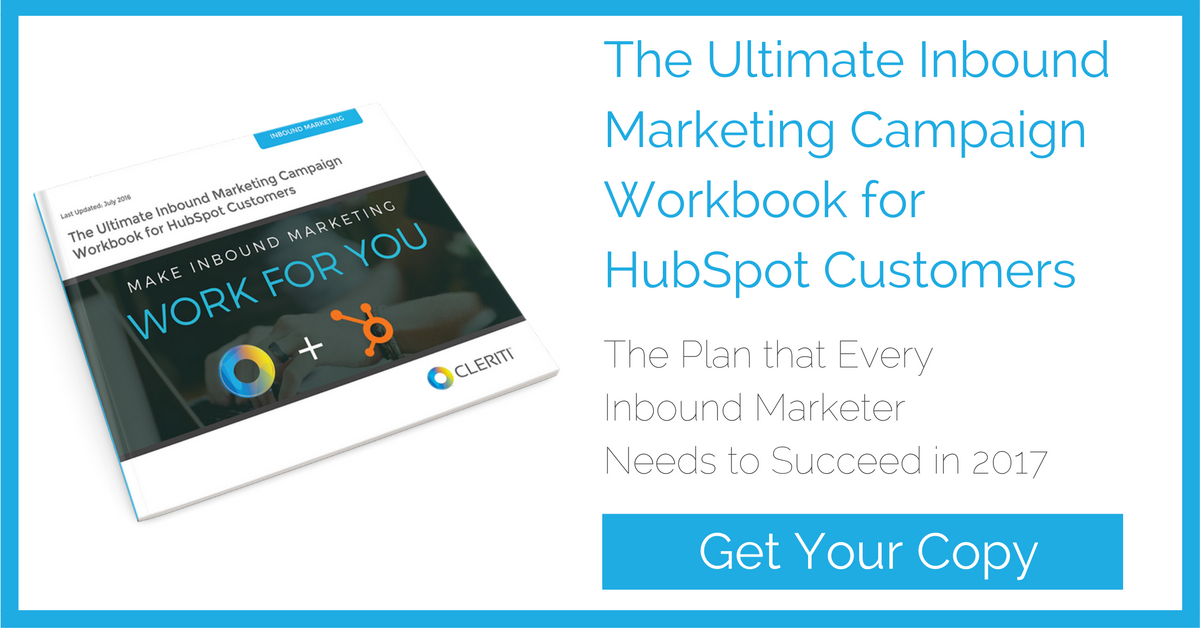- Nov 23, 2015
- By Jake Allspaw
- In Marketing Strategy and Planning
How HubSpot’s Analytics Help You Determine Your Marketing Effectiveness


Any digital marketer knows the importance of testing, tracking, and measuring your marketing tactics. HubSpot is an incredibly powerful tool for this. In addition to automating your marketing efforts, it delivers their measurable data and analytics right within the platform. Tracking these analytics can equip you with insights on your marketing results and help you prove that your inbound strategy is working. Having access to this data is one thing, but what you do with it will define your success as a marketer. In order to develop actionable insights, you need to know what metrics are significant, as well as how to optimize your marketing strategy based on the data.
Let’s take a look at a few essential metrics to help you measure the effectiveness of the content you produce for your inbound campaigns. You’ll find that these metrics can easily be broken down into more specific metrics as you dive into the analytics.
Visits
Before you can even think about how you are converting visitors to leads, you must first ensure that traffic is coming to your site. Your blog is often times the avenue that brings this much needed web traffic in.
According to Ginny Soskey, editor of the HubSpot Marketing Blog, "Visits isn't just a vanity metric. Coupled with your lead data, it's a crucial piece of information to decode what's happening in your funnel” (emphasis mine). If you aren’t directing traffic to your blog posts and eventually the rest of your website, you are going to create problems later in your sales funnel. If you can pinpoint problems in your web traffic, you will be able to ensure you have lead traffic coming in later on.
So what’s the story behind the visits?
Here a few questions to ask as you look at your visits:
Where did the traffic come from? (organic search, social media, another blog, etc.) HubSpot’s sources report allows you to see where the various leads came from. This informs the promotional aspect of your blog strategy. If you notice that LinkedIn posts generate more traffic than Facebook posts, you’ll see which channel is a better promotional outlet for your blog. Or if you find a lot of visits come from referrals, it may be worth your time to network with other bloggers and mention one another’s content in your respective content.
How many visitors converted? 10,000 visitors to your blog would be nice, but what if only one of them became a lead? If your content isn’t addressing a user’s pain points, they may simply leave the page. If you don’t have a clear call-to-action, a user may not even realize that you have anything to offer aside from an interesting blog post. Looking at your conversion rate will tell you how effective your content is at converting, and will help you determine how you need to adjust the messages you’re sending as well as the conversion path on your website.
Content Conversions
Once you’ve established a good flow of traffic to your site, you can start to look at what pieces of content drive conversions. Using HubSpot’s attribution reporting tool, you can see what specific pieces of content bring in the most leads. By looking at each individual post’s conversion rate, you can see what topics your leads find helpful. For example, say you run a donut production plant and your team writes blogs on three topics: flavor profiles, donut shop management, and the donut production process. After looking at your attribution report, you see that more leads are converting on blogs under the topic of donut production. Knowing this information, you should create more content about the donut production process.
Aside from topics, here are a few other variables to consider:
- What was the format of the blog? Was it a list? Series of questions? Was it visually engaging, perhaps with an infographic or video?
- What was the length of the blog? You can make a blog as long or as short as you want. However, you should pay attention to the length of the posts that get the most conversions.
- How was the CTA placed? If your CTA is the first thing a user sees on your blog, this may come off as spammy, and drive visitors away. Consider trying a few different placements and seeing which works best for your audience.
Leads
One of my favorite things about HubSpot is that it puts a name behind the numbers. As you evaluate the leads that converted on your content, you can learn a lot about the individual who is interested in your offerings. This way you can determine if it’s worth following up with a specific lead.
Let’s continue with the donut shop example. Say two people filled out a form after reading one of your blogs. One filled out their job title as “Shop Manager” and the other filled it out as “Donut Enthusiast” (wouldn’t that be a fun job title?). With this information, it’s easy to determine which leads are interested in your products and services, and which ones simply find your content interesting.
As I mentioned before, there is a story behind each lead. They are looking for a solution to the issues they face in their position. If they filled out a form on your landing page, it’s very likely you may have the solution to their pain points. It is incredibly important that your sales and marketing teams are aligned on this. If the leads you are generating aren’t sales-qualified, you will need to adjust the aspects of your strategy that aren’t moving leads through the funnel. Work together to iron out any kinks so you can ensure only qualified leads end up in your sales team’s inbox.
Don’t Forget the Human Touch
The most important aspect of looking at your analytics is seeing how each metric works together. You’ll only find ROI in your marketing results if you develop a strategy based on insights. Just because marketing is moving towards automation does not mean all creativity has been removed from the process. Understanding the relationships between the metrics takes a human touch. And remember, there is human on the other side of your data (unless you’re dealing with a lot of spam, but that’s a topic for another day).





